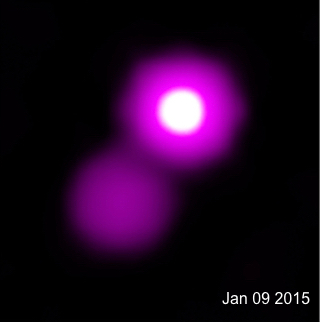 HEAPOW: A Previous Kilonova? (2018 Nov 12)
HEAPOW: A Previous Kilonova? (2018 Nov 12)
It's no exaggeration to say that August 17, 2017 was an historic day in the history of astronomy, and in the history of our understanding of the Universe. On that day, in a relatively nearby galaxy, two neutron stars gravitationally bound to each other spiralled together in a tremendous outpouring of energy. This event generated strong gravitational radiation detectable at earth, wrinkling spacetime itself. It also generated enormous amounts of electromagnetic radiation, spanning the range from the high-energy Gamma-ray band to low-energy radio waves. The detection of electromagnetic and gravitational radiation from this singular event allowed scientists to understand in detail what happens when two extremely compact and dense neutron stars spiral together, and provided important new clues about the nature of matter and how heavy elements, like gold, (and more essential ones, like molybdenum) are created. The frequency of binary neutron star merger events is still an open question, and the search is on for other similar events. Maybe we've seen some already? On New Year's Day, 2015, more than two and a half years earlier, a short gamma-ray burst was seen by the Fermi Gamma Ray Space Telescope, then a bit later by the Neil Gehrels Swift Observatory, and other high-energy observatories. The image above shows two observations of this event by the Chandra X-ray Observatory. The image on the left was obtained more than a week after the Fermi detection, while the middle image was obtained more than a month after that. The transient is the fainter source of X-ray emission seen to the lower left of the bright source (which happens to be an X-ray emitting galaxy). A simulation of the merged neutron star, and the strong jet of high-energy emission the merger should produce, is illustrated on the right. This event, a short Gamma-ray burst showing long-lasting X-ray emission, shares characteristics with the August 2017 merger event. This suggests that, on New Year's Day, 2015, we also witnessed the merger of two neutron stars, probably creating a black hole in its wake. If this is correct, this event would also have produced gravitational waves, but these gravitational waves would unfortunately not have been detectable at the distance of the source from earth.
CXC: Kin of Gravitational-Wave Source Discovered
viewtopic.php?t=38791
| << Previous HEAPOW | High Energy Astrophysics Picture of the Week | Next HEAPOW >> |